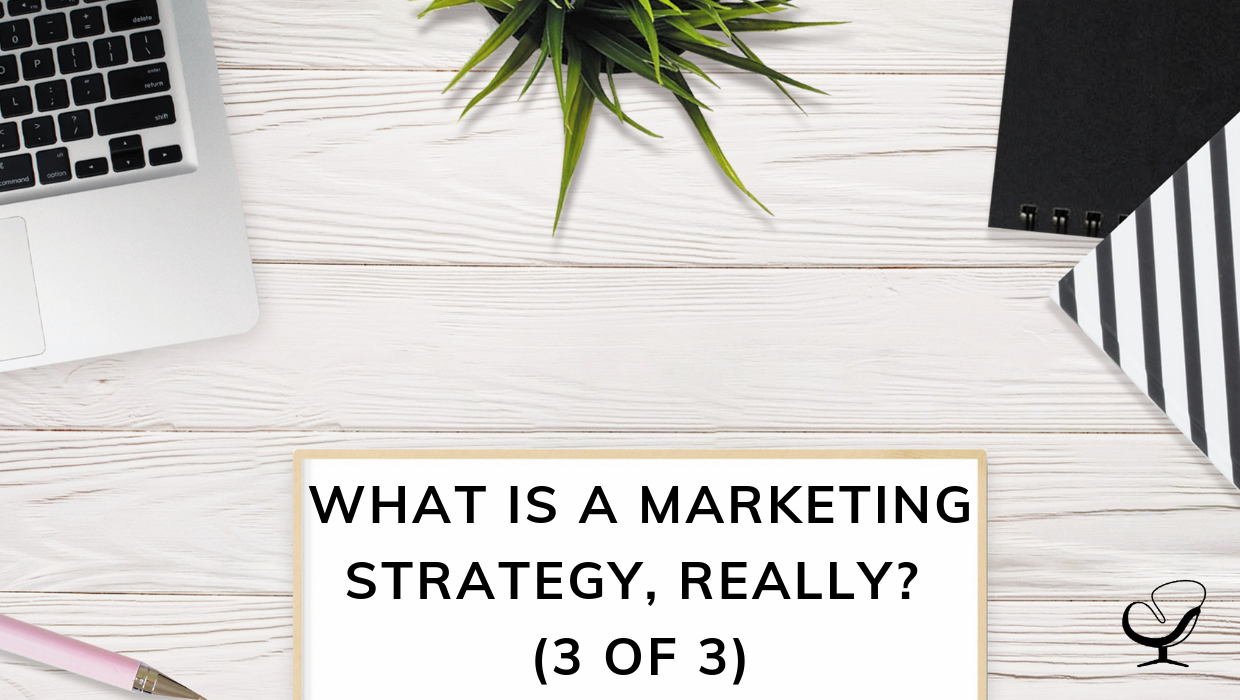In my previous posts (part 1 and part 2) I discussed the first components of a marketing strategy for private practice: thinking about your interests and goals, your target audience, and your brand. In this post, I write about the last element of a marketing strategy, the so-called Marketing Mix, which is essential to transition between strategy and action.
Marketing Mix
The idea of a “marketing mix” refers to ensuring all the necessary marketing “ingredients” are taken into account and coordinated with each other, as the marketing strategy is designed and executed. In that sense, the marketing mix is the bridge between strategy and implementation.
The original formulation of the “marketing mix” is known as the 4 P’s of marketing. While there have been attempts at updating or modifying this framework (which was proposed some decades ago), I think it is still a very useful way to organize how we think about marketing. The four P’s are Product, Promotion, Price, and Place.
Product
As therapists, our main “product” is our clinical work which, at its core, I see as neither a product nor a service, but as an experience. This experience includes mainly the experience of our clients in the consulting room (including their experience of us), but also their experience between sessions, how their life changes through our work together, or even how they experienced us before we met for the first time.
Therefore, a very important question is, what is the experience we want our clients to have? This is intrinsically tied to your therapeutic approach, your view on what therapy is about, and how it helps people, so it is something that deserves thoughtful consideration.
Therapists who want to grow their business may think of simply adding more clients to their caseload (i.e., offering more of the same product), or getting more creative by expanding their product offering. This might include adding more clinicians to their practice, or developing other products (e.g., a newsletter, ebook, podcast, workshop, or webinar) or services (e.g., supervision, consultation, mediation, or coaching).
There are two important things to keep in mind. First, these additional products and services should be aligned with your target audience and with your brand positioning. Second, the goal of expanding your offering can be to provide additional revenue streams. But even if you give something away (e.g., a free podcast or workshop), that can definitely help build your brand.
Promotion
This is what comes to mind when most people think of “marketing,” but it is only one of its components. “Promotion” sometimes gets a bad rep, evoking images of misleading ads and boisterous self-aggrandizing. That is not what it is about. Promotion is about communication and connection; it is about helping others learn about and have access to your expertise.
Promotion includes all the activities that create and sustain awareness of your brand, and help people get to know you. It involves all the ways in which you communicate something about you and your practice: advertisement (online and offline), your website and blog, your social media pages, your profile in therapist directories, any mailing your send out, media appearances, your podcast and books, your marketing materials (business cards, brochures, merchandising), and more.
I usually include networking as part of “promotion”, since it is one of the most potent ways to let people learn about you and what you do. I strongly believe that nothing beats face to face connection, especially when we see the focus of marketing as not just “getting your name out there”, but as building mutually-beneficial relationships.
When it comes to networking, and to marketing in general, the question is not so much what can others do for you (e.g., refer you more clients!) but what can you do for them. It is sometimes less about our own needs as therapists and more about theirs, as potential partners or referral sources. What can you offer (for free if needed) that will be useful? How can you be a reliable and consistent resource? I am convinced that giving is the best way to get back.
The proliferation of communication channels and of possible ways to convey multiple different messages, makes it very important to keep in mind two things. First, do what feels most comfortable for you, but try to push yourself out of your comfort zone once in a while. Second, always think about how are you are being relevant for your target audiences and consistent with your brand.
Price
This component is mainly about how we set our prices, whether for therapy (i.e., our full fee) or for any other products we develop. Even if we take insurance and the majority of our clients do not pay our full fee, pricing is very important because it communicates value and it can impact our brand perception.
There are many ways to set our prices, and it can help to triangulate different methods. For example, you can start from how much you want to take home, and factor in business expenses and how much you will work. Or you can get a sense of how much other therapists in your area charge (e.g., looking at their websites of directory profiles).
It is also important to be aware of our feelings about money and our own worth, which sometimes might get in the way of pricing in ways that are fair to our skills and the benefits we provide. I don’t believe that helping others and making a comfortable living are fundamentally incompatible.
Pricing goes beyond how we set our full fee. It includes decisions such as whether we will take sliding scale or pro-bono cases (and how many), if we offer any type of promotional pricing (e.g., a free initial consultation), a non-traditional pricing structure (e.g., concierge services), as well as our payment policies (including late cancellation and no-show) and how we communicate and enforce them.
I would also like to make a case for de-emphasizing “price” and focusing on “value”. It is perfectly fine if a therapist chooses to have low fees or to be flexible with their sliding scale. However, I suggest caution with this approach; it is usually better in the long run if the main reason why people choose you is not because your fee is affordable, but because they anticipate and experience the value and the benefits of working with you.
Place
“Place” refers to the all the ways in which a product or service is delivered to the consumer. Compared to the other elements of the marketing mix, this might be slightly less relevant for therapists.
In our field, “place” would include the decision of how you will deliver your clinical services (e.g., only in your office, home visits, tele-therapy, through “therapy” apps) and non-clinical products (e.g., a live workshop vs a webinar, selling ebooks only through your site but on partner sites or on Amazon).
Within this category I would also include the decisions you make regarding your office location and office space (including waiting area). As mentioned in my previous post, all these elements will contribute to how people will perceive you, i.e. to your brand. Are you in a posh suburban neighborhood or in an accessible part of town? Does your office have personality or does it look like any other therapist’s space? Research I read some time ago suggested that therapist offices perceived as more personalized, led to higher expectations for the therapist’s quality, qualifications, and friendliness.
Again, the important point here is that whatever decision you make need to be aligned with your target audience and your brand. For example, if your tone in your website is very informal and “edgy”, having your office in a traditional and bland office park might feel dissonant.
What does this all mean?
Marketing, like relationships, is not a one-time event but takes ongoing effort. It also requires us to be aware. To understand and be responsive to the needs of others. While being true to who we are. Understanding both the people we want to serve and ourselves is essential. As is trusting in our own value and what makes us different.
As you can see, there is a lot to think about when it comes to marketing. You don’t need to figure it all out before you do anything. But it is very important to take a step back from time to time and think about it. Otherwise, we can miss the forest for the trees while getting lost in everything we could “do”. Or we could do a bunch of marketing activities only to notice later that half of them did not have an impact. Maybe because we did not think enough about the needs of the people we were trying to reach.
“Just Do It” was a great slogan for Nike, but it took them a lot of thought and hard work to come up with a message that defined their brand and resonated with their target audience. Marketing is also about action but your practice and your life deserve the same thoughtfulness.
 Santiago Delboy, MBA, LCSW, is a psychotherapist in private practice in Chicago, IL. Prior to joining the mental health field, he spent over a decade working in marketing research for multiple organizations and as a consumer insights consultant with McKinsey & Company, where he focused on business growth and brand strategy. He is the founder of Fermata Psychotherapy, where he helps individuals navigate the consequences of complex relational trauma and live a fulfilling life.
Santiago Delboy, MBA, LCSW, is a psychotherapist in private practice in Chicago, IL. Prior to joining the mental health field, he spent over a decade working in marketing research for multiple organizations and as a consumer insights consultant with McKinsey & Company, where he focused on business growth and brand strategy. He is the founder of Fermata Psychotherapy, where he helps individuals navigate the consequences of complex relational trauma and live a fulfilling life.

